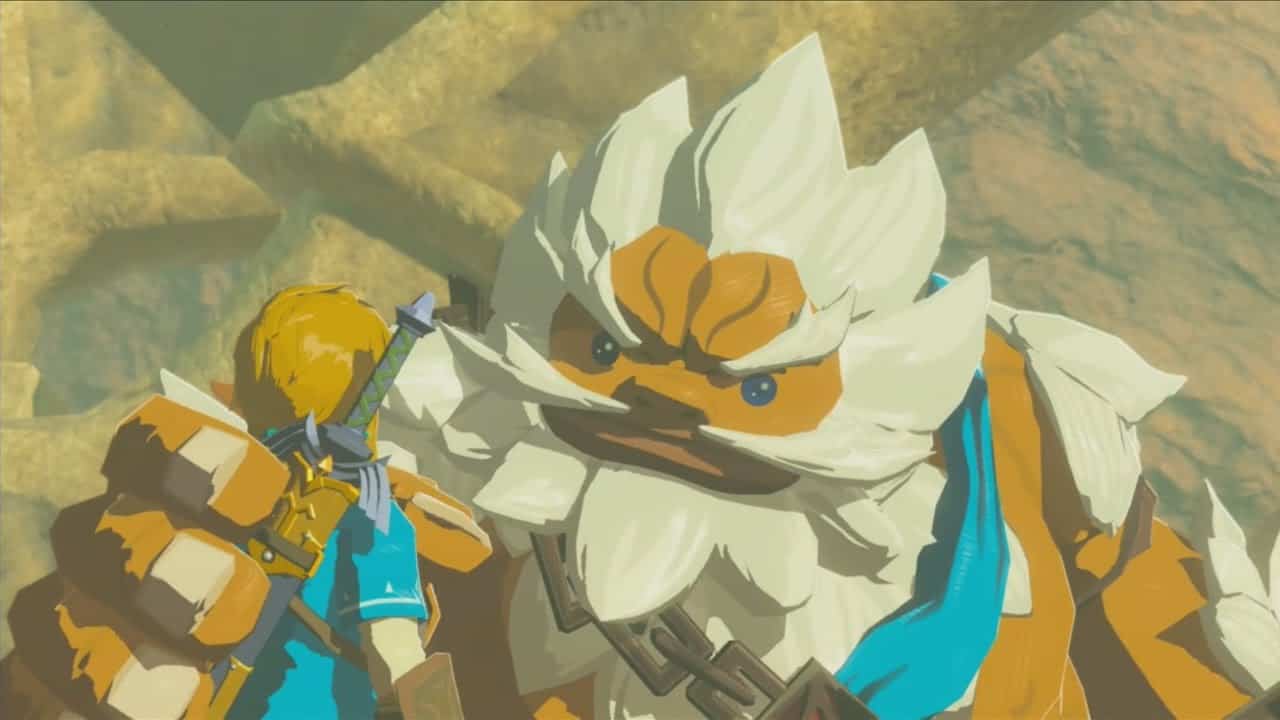Like the aquatic Zora or airborne Rito, the affable and hearty Goron tribe is one of the most iconic groups and cultures in the wide-ranging history of The Legend of Zelda franchise. First meeting players as part of child Link’s quest in The Legend of Zelda: Ocarina of Time, the Goron have continued to appear in more mainline Zelda titles than any of the other non-human races in Hyrule. Most often taking refuge in the hills and caves surrounding Death Mountain, the Gorons are large, heat-resistant, strong, and have a voracious appetite for rocks and gems. And, like other non-human tribes of Hyrule, all Goron appearances in The Legend of Zelda share some similarities.
The Gorons are immediately recognizable thanks to their telltale golden skin and large, emotive eyes, though they do tend to vary in size, muscular definition, and hair. They feature long torsos and arms that contrast with their shorter, more stocky legs. Interestingly, there are no female Gorons that appear throughout The Legend of Zelda series, and as a male-dominant species they focus primarily on their size and strength as their defining attributes. In addition to commonly being found among mountains and caves, several traveling Goron salesmen appear throughout the series in a variety of biomes. These are all Goron appearances throughout the franchise, including how they factor into Link’s adventures.
The Legend of Zelda: Ocarina of Time
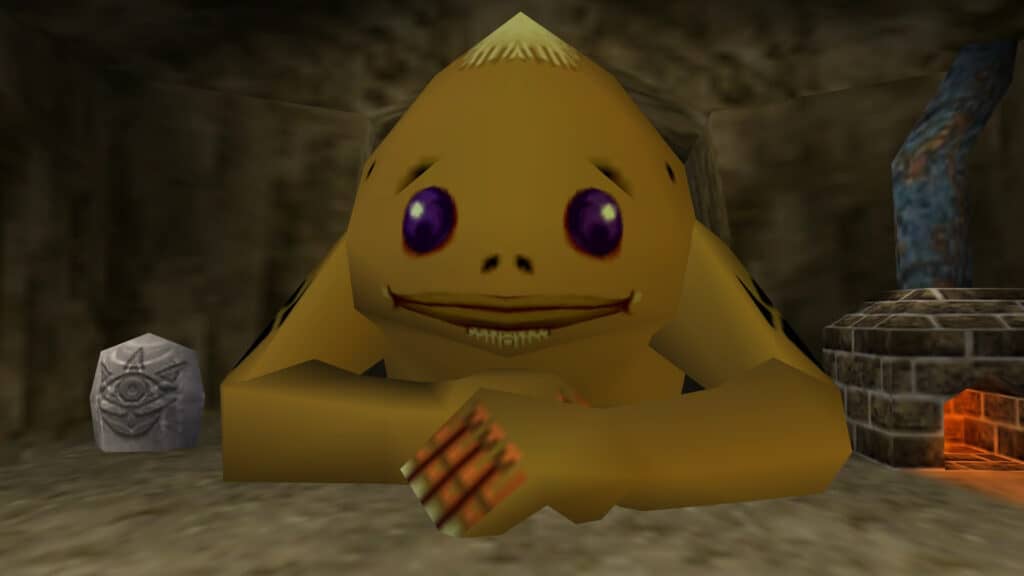
Players meet the Goron tribe for the very first time in Ocarina of Time‘s main quest as Link searches for the Spiritual Stone of Fire. The Gorons know this stone as Goron’s Ruby, and inform Link that the entrance to the mining complex where the stone lies, Dodongo’s Cavern, is currently inaccessible due to a fallen boulder. This is causing the Gorons to starve as they can’t mine their main source of food, rocks, and Link vows to both help the Gorons and retrieve the Spiritual Stone of Fire. For his heroism, Link becomes an ally of the Gorons and their elder Darunia, who ends up being the Sage of Fire after Link obtains the Master Sword and travels into the future.
As a child, the Gorons teach Link how to use bomb flowers to destroy weak walls and boulders. Later, as an adult, the Goron tribe gift Link with the heat-resistant Goron Tunic so that he can enter the Death Mountain Crater. Link can also engage in a lengthy trading quest with the Gorons that takes him all over Hyrule, eventually earning the powerful Biggoron’s Sword as the final reward.
The Legend of Zelda: Majora’s Mask
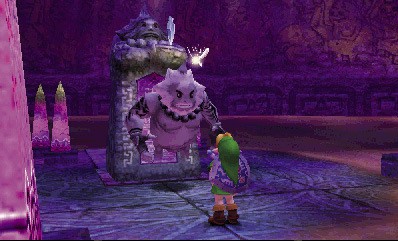
The Gorons return in Majora’s Mask, even though the game takes place in the far off land of Termina rather than Hyrule. In Termina, the Goron tribe reside in the northern part of the world known as Snowhead. When Link arrives, he learns from the Gorons that the area is being uncharacteristically weathered by snow and ice, and Link dons the Goron Mask to learn how to become a Goron himself and help them with their climate woes. Link learns how to play the Goron Lullaby and discovers that the source of the blizzard is none other than the massive, mountain-sized Goron Biggoron, who through turning invisible is accidentally blocking the entrance to the Snowhead Temple. After playing the lullaby, Biggoron falls asleep, granting Link access to the temple.
The Legend of Zelda: Oracle of Ages/Seasons
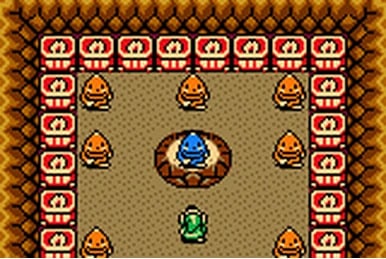
The Gorons return once again in the twin Game Boy Color titles The Legend of Zelda: Oracle of Ages and Oracle of Seasons. In Seasons, Link meets the Gorons as part of his journey as he travels through Goron Mountain to reach the Temple of Seasons. Interestingly, Oracle of Seasons is the first game to introduce that the Gorons like to drink lava as well as eat rocks, and Link needs to acquire some Lava Soup as part of the game’s trading quest.
In Oracle of Ages, the Gorons of Labrynna reside in the Rolling Ridge region, and Link discovers that the current Goron elder is trapped underneath some rocks. Traveling back to the past and defeating the King Moblin, Link acquires a bomb flower that he uses to free the Goron elder in the present day, which then allows him access to the next dungeon in the game. Returning and speaking with the Gorons in Oracle of Ages after clearing this dungeon will allow Link to participate in several music and dance mini-games with the tribe.
The Legend of Zelda: The Wind Waker
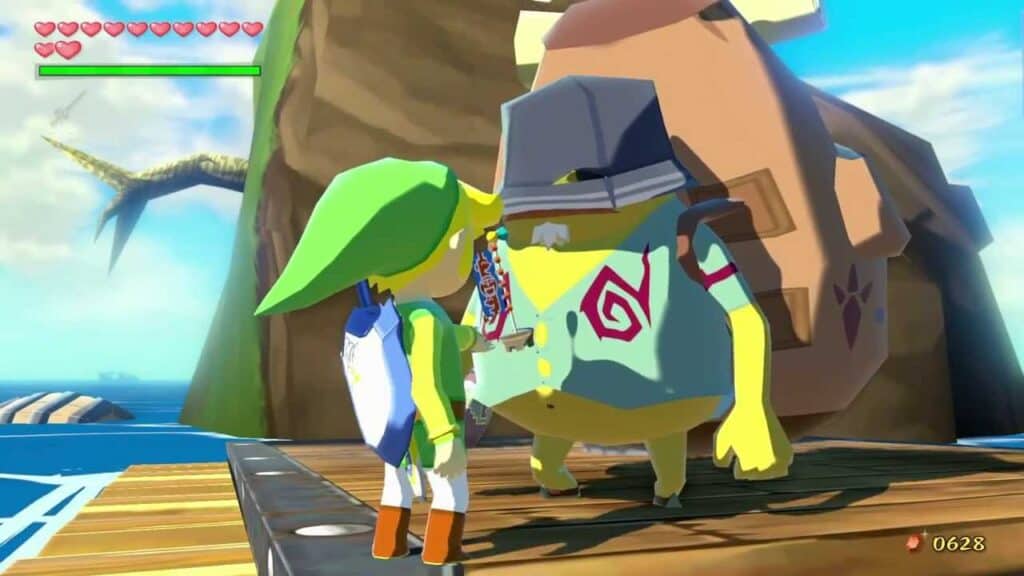
With the land of Hyrule submerged under the Great Sea, the Gorons take to wandering the world as travelling merchants. Link will meet three different incognito Gorons throughout his journey in The Wind Waker, each of whom are instrumental in providing Link with the goods that are part of the game’s lengthy Trading Sequence side quest. After trading items in a specific sequence with the three wandering Goron merchants, their items become available for purchase inside of Zunari’s Shop on Windfall Island. The Gorons in Wind Waker are some of the only ones in the entire Zelda series to wear clothes, which help to disguise them as being Gorons.
The Legend of Zelda: Four Swords Adventures
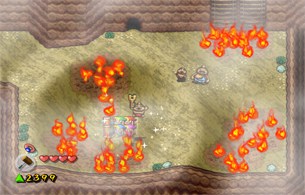
Four Swords Adventures sees the return of the Gorons to their traditional home of Death Mountain, and the game distinguishes between the young and old members of the tribe using their clothing. The younger, child Gorons wear read loincloths while the older, adult Gorons wear blue togas. With the Helmaroc King taking up residence within Death Mountain and raining rocks down on the Gorons below, the tribe decides to pelt it with bombs, which they discover it has a weakness to. The eruptions from Death Mountain and interference of Shadow Link leave the mountain pass and Gorons’ home engulfed in flames, which the four Links need to extinguish before they can face the Helmaroc King.
The Legend of Zelda: The Minish Cap
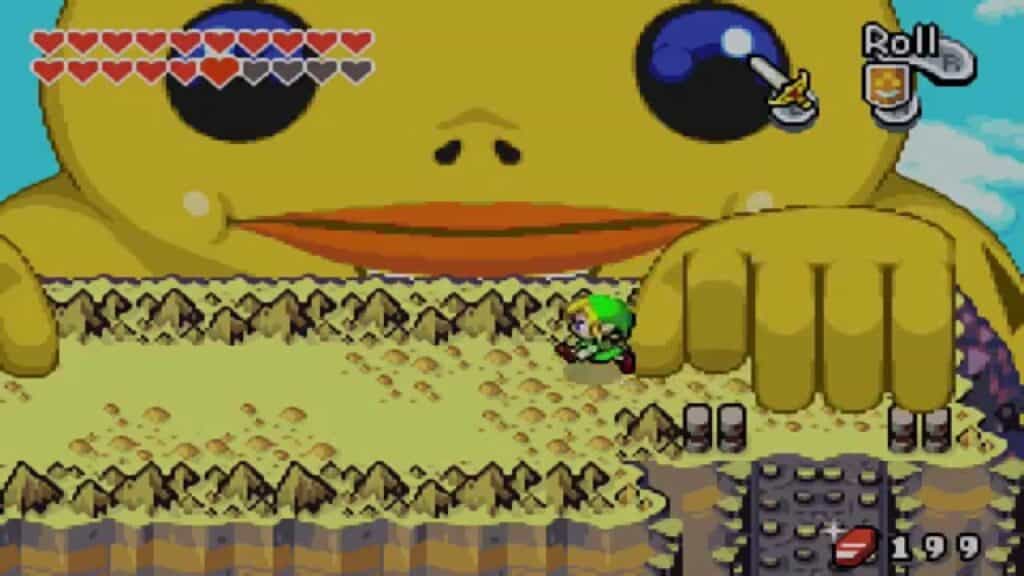
During the era of the timeline in which The Minish Cap takes place, the numbers of the Goron tribe have significantly declined. Link meets less than 10 Gorons throughout the entirety of The Minish Cap‘s adventure, with the majority of them being the Goron Diggers residing in the Goron Cave. The massive Biggoron once again makes an appearance, observing Link as he makes his way through Veil Falls. If Link returns to speak with Biggoron later in the game, he asks to “nibble” on Link’s shield, turning it into the Mirror Shield in the process. Of all Goron appearances in the series, this is one of the only ones where players get a true sense of Biggoron’s scale and sheer size.
The Legend of Zelda: Twilight Princess
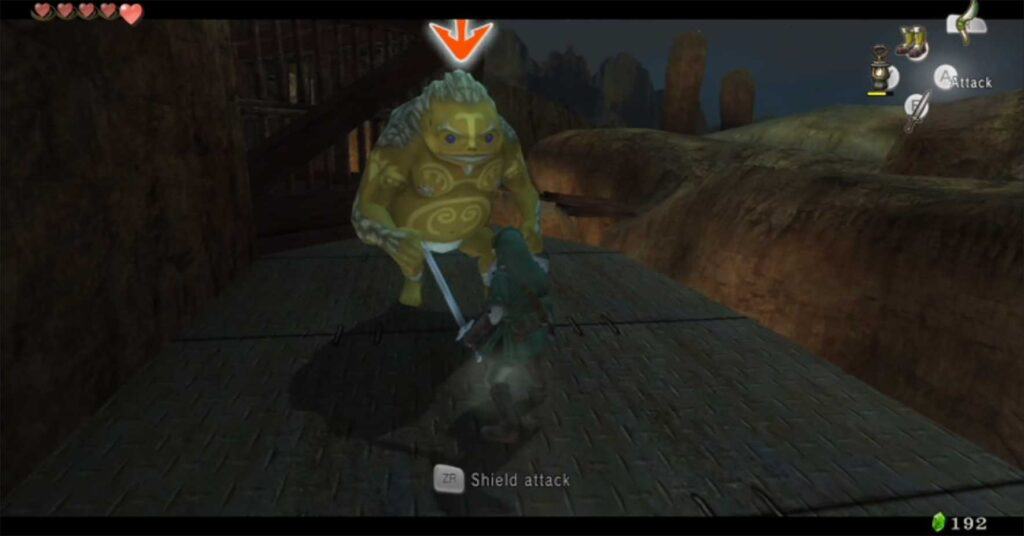
The Legend of Zelda: Twilight Princess‘ Gorons once again inhabit Death Mountain and the surrounding area, but there are also some that players can find in other parts of Hyrule as wandering merchants, continuing their characterization from The Wind Waker. Twilight Princess‘ Gorons are visually distinctive from past incarnations by featuring tribal-like tattoos all over their bodies and rock-like hair formations covering their heads and backs. Here the Gorons have a leader and 4 elders, each of whom play an important role in Link’s obtaining of the legendary Hero’s Bow. The first step in this quest is for Link to acquire the Iron Boots, which allow him to compete against the Gorons in a traditional Sumo wrestling competition and win. After earning the Gorons’ trust, Link enters the Goron Mines to rescue their leader and elders.
The Legend of Zelda: Phantom Hourglass
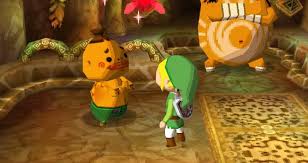
The Goron tribe appears once again in Phantom Hourglass, only in this DS-exclusive Wind Waker sequel their appearance is somewhat of a mix between their incarnations in Wind Waker and Twilight Princess. They have more yellowish skin than previous versions of the Goron tribe but also happen to feature the same white tribal tattoos on their body as the Gorons from Twilight Princess. Rather than living near a mountain, Phantom Hourglass‘ Goron tribe has an island all their own appropriately named Goron Island. The Gorons in Phantom Hourglass play a pivotal role in Link’s ability to craft the Phantom Blade necessary to defeat Bellum, as they’re in possession of the only piece of Crimsonine — one of the Pure Metals. Again Link must earn the Gorons’ trust through a mini-game in order to gain access to the Goron Temple where the Crimsonine resides.
The Legend of Zelda: Spirit Tracks
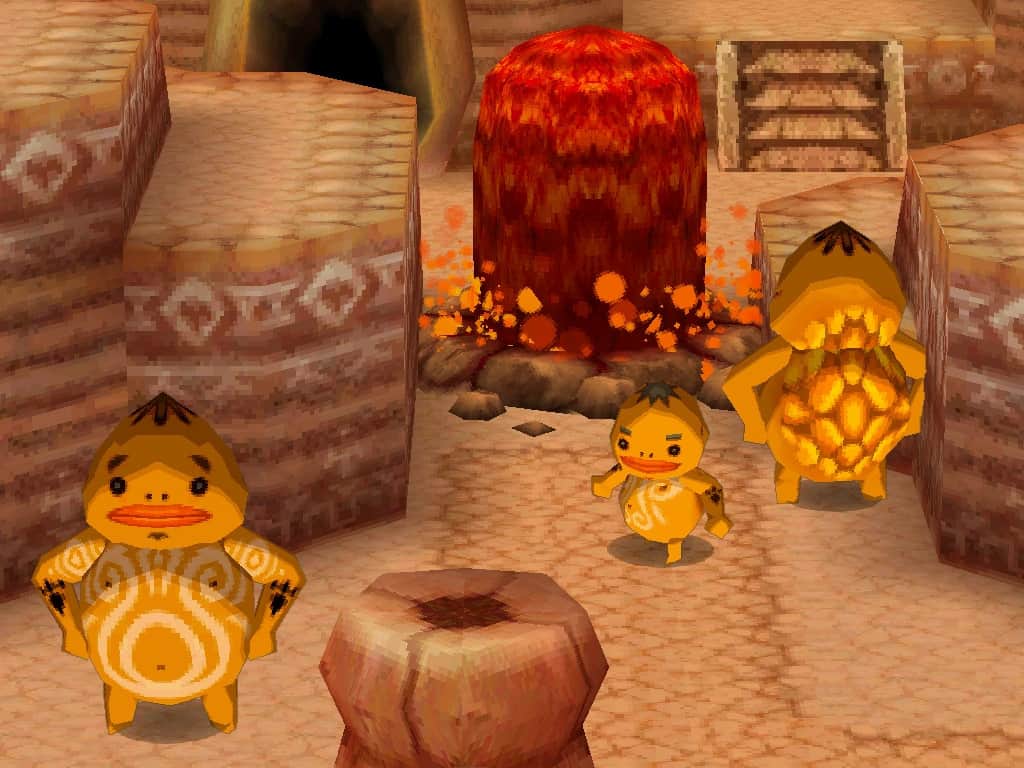
Spirit Tracks‘ version of Hyrule features a new Goron Village that lies within the Fire Realm in the northeast region of the map. After Link discovers that the entrance to the village is inaccessible due to massive geysers of flame, he meets the Mountain Goddess’s messenger Goron Kagoron, who gifts Link the freight car necessary to transport Mega Ice back to Goron Village. The Mega Ice can put out the flames blocking the entrance to Goron Village, and Link can speak with the Goron Elder. After meeting and earning the trust of the Elder, Link is granted access to the Fire Temple, and the rest of the Gorons provide Link with helpful hints on how to defeat the beasts inhabiting the tracks leading to the temple.
The Legend of Zelda: Skyward Sword
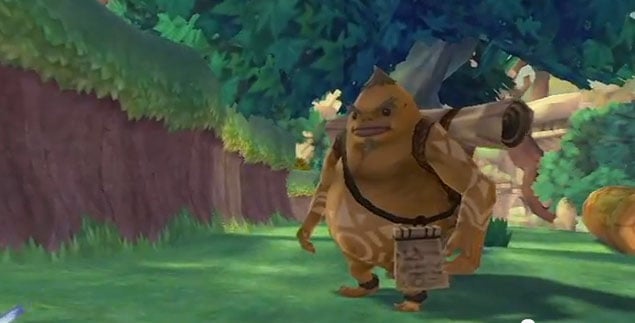
In the lore of Skyward Sword, the noble Gorons were one of the surface tribes who stood against Demise with the Goddess Hylia, only to have most of the numbers dwindle in the intervening centuries prior to the events of the game. Link only meets three Gorons throughout his adventure, with the most prominent of them being the traveling archaeologist Gorko. Gorko reappears at various points throughout the game to inform Link of his research into the Goddess Cubes and Bird Statues, and expresses amazement when he sees how these artifacts react to Link’s presence. In addition to Gorko, Link meets two additional Gorons in the Lanayru region of Skyward Sword‘s surface world.
The Legend of Zelda: Breath of the Wild
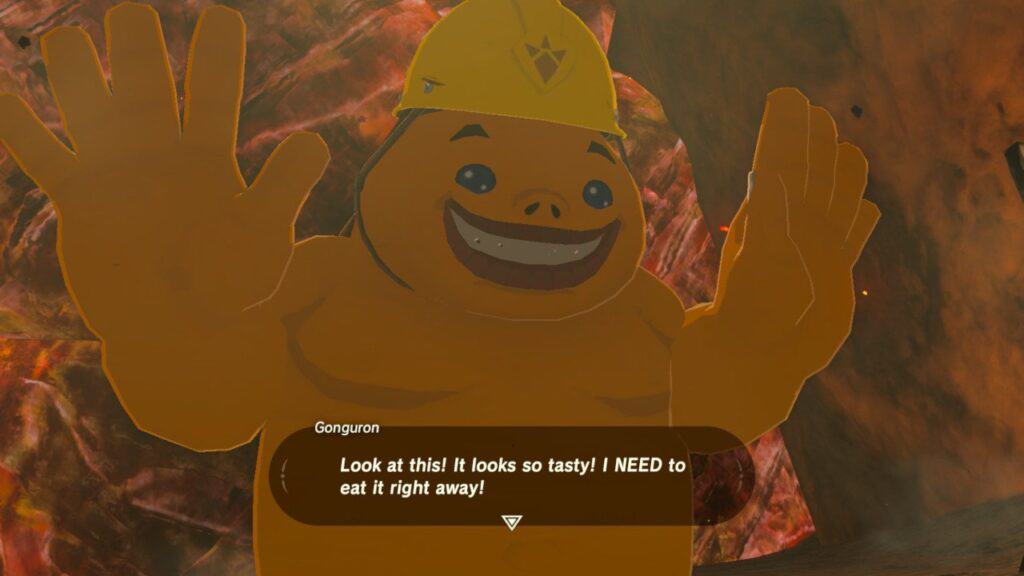
In the Age of Calamity, the Gorons once again reside in their home within Death Mountain and act as stewards of the location. Though similar to all Goron appearances in previous games, the Gorons of Breath of the Wild are much more technologically advanced and have fully-developed mining and rail systems, as well as various automated defenses for their village. The former Goron Champion Daruk was the pilot of the Divine Beast Vah Rudania, but he fell when Ganon unleashed the calamity upon Hyrule and turned all of the Divine Beasts against their Champions. After meeting with the Gorons, Link discovers that the Divine Beast he must cleanse is residing in the Abandoned North Mine, which was formerly a prosperous location for Goron mining. The Gorons are once again depicted as eating rocks, featuring rock-like hair formations, and have various shades of skin tone and skin markings.
The Legend of Zelda: Tears of the Kingdom
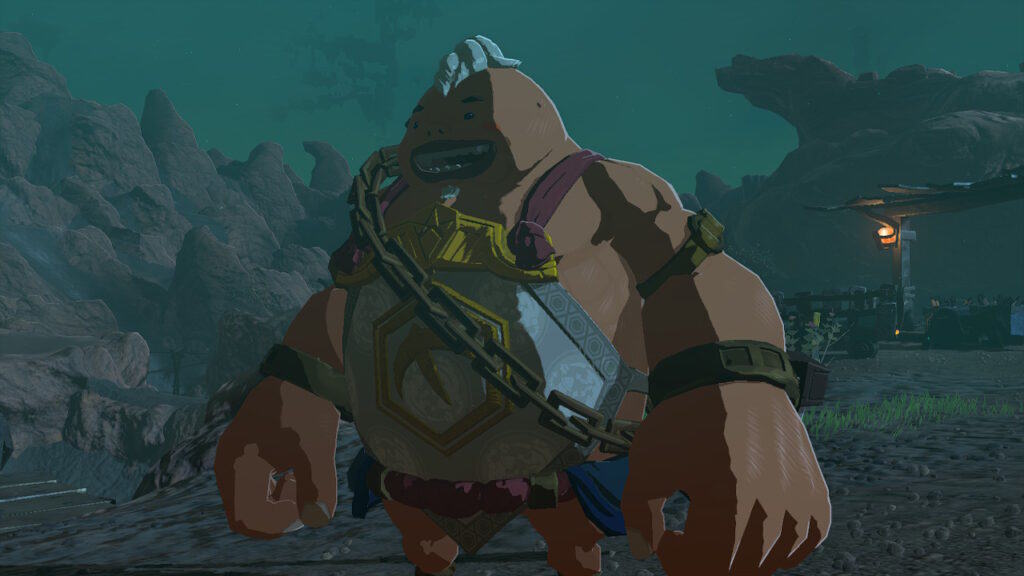
The most recent appearance of the Gorons comes courtesy of the latest mainline game in the series, The Legend of Zelda: Tears of the Kingdom. Once again taking place in the Age of Calamity and directly following the events of Breath of the Wild, Link is sent on a quest to investigate various disturbances around Hyrule in hopes of finding Princess Zelda. One of these disturbances is the strange rock-eating addiction that has befallen the Gorons in Goron City, prompting Link to partner up with the young Goron Yunobo. Yunobo is the descendant of the Goron Champion Daruk and helps Link make his way up through Death Mountain to reach the Fire Temple. After Link clears the Fire Temple, Yunobo accepts his role as the Sage of Fire and grants Link his unique ability.
